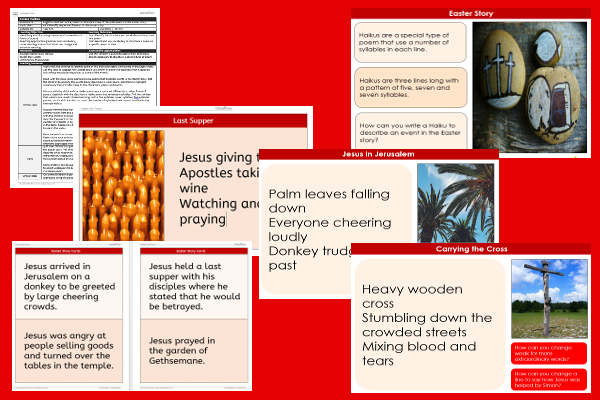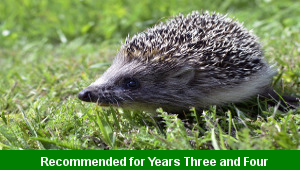Easter Haikus

This English teaching pack for Key Stage Two gets the children to read and write example Haiku poems to express ideas and thoughts about some of the main events and significant characters that feature in the Easter story.
The class can practise identifying and counting the syllables in words which can be used when structuring and formatting a Haiku poem to match the line pattern for this type of writing.
Download this teaching pack including a lesson plan, classroom activities and an interactive presentation to read and write example Haiku poems to express ideas and thoughts about some of the main events and significant characters that feature in the Easter story
Activities in this teaching pack include a shared reading text to identify and describe the format and structure of Haiku poems based on different events in the Easter story and a set of cards to select and record vocabulary words about an event in the Easter story to use in a Haiku poem.
The interactive presentation gets the children to explore how to write Haiku poems to illustrate some of the main events in the Easter story.
This lesson is part of an English scheme of work to get the children to practise composing and publishing different types of poems that use line structures and vocabulary to illustrate scenes in the Easter story. There are teaching activities for shared learning, differentiated worksheets to support independent learning and interactive presentations to introduce concepts and key skills.
-

Rounding Hundreds
Explain and model how to round some different numbers to the nearest hundred based on the place values of the digits in each number
-

Rounding Tens
Identify and record how to round some different numbers to the nearest ten based on the place values of the digits in each number
-

Classic Animal Stories
Investigate the structure and content of classic works of fiction by significant authors with animals as the main characters
-

Cities, Towns and Villages
Research and present the history of a range of different buildings and people that are part of the local community using a school exhibition
